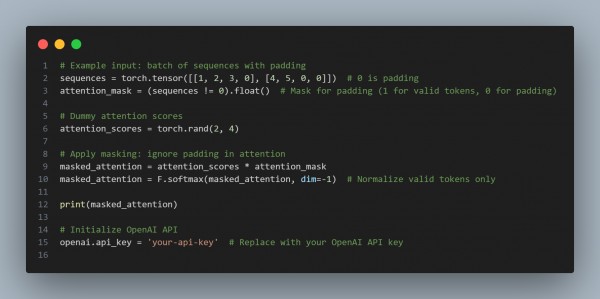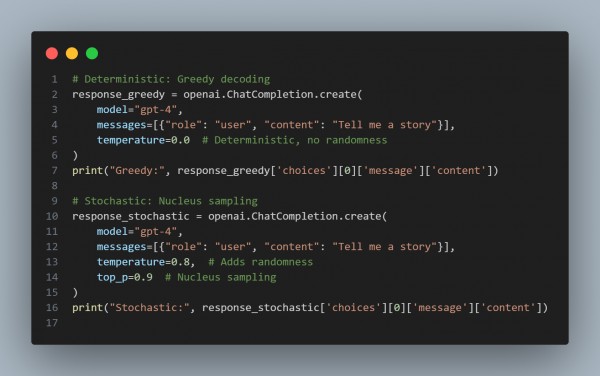Stochastic sampling introduces randomness, allowing for diverse and creative text outputs.
- Deterministic methods like greedy search or beam search produce predictable and often repetitive results.
- Stochastic methods like top-k or nucleus sampling balance randomness with control for more realistic generation.
Here is the code snippet showing how it is done:


In the above code, we have used the following:
- Greedy Decoding:
- temperature=0: No randomness; the model selects the most probable word at each step.
- Result: Safe but predictable and sometimes repetitive.
- Stochastic Sampling:
- temperature=0.8: Adds controlled randomness for creativity.
- top_p=0.9: Implements nucleus sampling, focusing on a subset of most likely words (cumulative probability ≤ 0.9).
- Result: Diverse and realistic outputs, great for storytelling or creative tasks.
This demonstrates the trade-off between consistency (greedy) and creativity (stochastic).
 REGISTER FOR FREE WEBINAR
X
REGISTER FOR FREE WEBINAR
X
 Thank you for registering
Join Edureka Meetup community for 100+ Free Webinars each month
JOIN MEETUP GROUP
Thank you for registering
Join Edureka Meetup community for 100+ Free Webinars each month
JOIN MEETUP GROUP